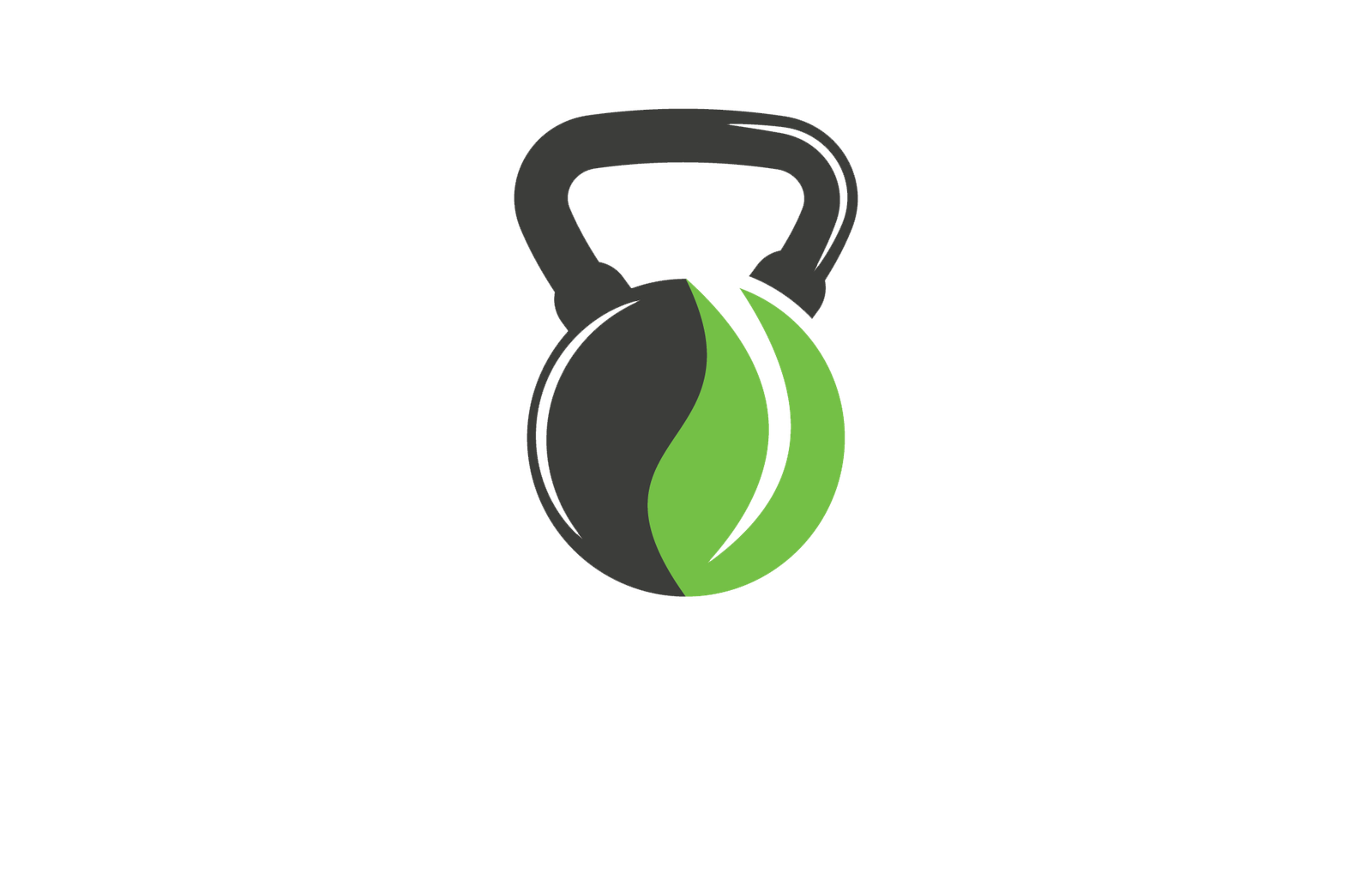Don't miss our holiday offer - 20% OFF!

Post-Workout Recovery: Safe Practices
Unlock the secrets to maximizing your fitness gains and reducing injury risk with these essential post-workout recovery techniques.
We take our recovery as seriously as our workouts, understanding that a well-planned cool-down routine is essential to maximizing gains and preventing injuries. After exercise, we prioritize stretching to reduce muscle soreness, followed by hydrating with electrolyte-rich water to replenish what's lost. We refuel with balanced nutrition, incorporating anti-inflammatory foods to mitigate the effects of intense exercise. By incorporating these safe practices into our routine, we can optimize our recovery and performance. Now, let's dive deeper into the specifics of each technique to unleash a stronger, healthier us.
Key Takeaways
- Incorporate stretching exercises into your cool-down routine to reduce muscle soreness and improve flexibility.
- Prioritize hydration by replenishing lost electrolytes with high-quality water to maintain electrolyte balance.
- Manage inflammation naturally by consuming anti-inflammatory foods and nutrients, such as turmeric, ginger, and omega-3 fatty acids.
- Utilize compression garments to enhance blood flow and provide muscle support, reducing muscle soreness and fatigue.
- Monitor progress and adapt your recovery strategy as needed, tracking heart rate, sleep quality, and muscle soreness to make data-driven decisions.
Cooling Down With Stretching
After a tough workout, we need to slow down and calm our bodies with a deliberate cool-down routine, and incorporating stretching exercises is an excellent way to do so. This is essential because it helps our bodies shift from an active state to a resting state, reducing muscle soreness and improving flexibility. By incorporating flexibility exercises into our cool-down routine, we can increase our range of motion and reduce stiffness. Additionally, stretching exercises promote muscle relaxation, which is vital for reducing muscle tension and preventing injuries. When we stretch, we're allowing our muscles to lengthen and relax, reducing muscle spasms and cramps. This, in turn, helps us recover faster and feel better after a workout. By making stretching a priority, we can improve our overall fitness and well-being. So, let's make stretching a non-negotiable part of our post-workout routine and reap the benefits of a faster, more effective recovery.
Hydrating for Optimal Recovery
As we wrap up our stretching routine, we turn our attention to replenishing the fluids lost during our intense workout, knowing that proper hydration is key to accessing peak recovery. We reach for our water bottles, aware that replenishing lost electrolytes is vital for maintaining electrolyte balance. We opt for water with high-quality electrolyte content, ensuring our bodies can effectively reabsorb what's been lost.
We also prioritize water quality, choosing filtered or purified water to minimize impurities and maximize absorption. Imperative to drink water that's free from contaminants, which can hinder our body's ability to recover efficiently. By doing so, we support our body's natural recovery processes, facilitating the removal of waste products and reducing muscle soreness. By staying hydrated, we're better equipped to tackle our next workout, feeling refreshed, revitalized, and ready to take on new challenges.
Refueling With Balanced Nutrition
As we focus on refueling our bodies after a workout, we recognize that balanced nutrition plays a critical role in our recovery. We need to replenish our energy stores and provide our bodies with the necessary building blocks to repair and adapt. By consuming the right mix of protein, complex carbohydrates, and healthy fats, we're setting ourselves up for peak recovery and preparing our bodies for the next challenge.
Protein for Muscle Repair
We prioritize protein for muscle repair because it provides the essential amino acids needed to rebuild and repair damaged muscle tissue. This is especially vital after intense workouts, as our muscles are broken down and need to be rebuilt to support muscle building and growth.
| Protein Type | Timing | Amount |
|---|---|---|
| Whey Protein | Immediately after workout | 20-30 grams |
| Casein Protein | Before bedtime | 20-30 grams |
| Plant-Based Protein | Post-workout or as a snack | 15-20 grams |
Research shows that consuming protein within an hour after exercise, also known as the 'anabolic window,' is essential for ideal muscle repair and growth. This is because protein timing plays a vital role in muscle building and recovery. By fueling our bodies with the right amount and type of protein at the right time, we can support muscle growth, reduce muscle soreness, and enhance overall athletic performance.
Optimal Carb Intake Timing
When we refuel with carbs after a workout, we're not just replenishing energy stores, but also supporting muscle recovery and growth. This is especially important after intense or prolonged exercise, as our bodies rely on glycogen stores to fuel our workouts. To optimize carb intake, we need to time it just right.
Here are some key takeaways to keep in mind:
- Within 30-60 minutes post-workout: Consume a mix of simple and complex carbs to replenish energy stores and support muscle recovery.
- Choose carb-dense foods: Focus on whole foods like fruits, whole grains, and starchy vegetables that provide a balance of carbs, fiber, and essential nutrients.
- Aim for 1-1.5 grams of carbs per kilogram of body weight: Tailor your carb intake to your individual needs and activity level.
- Don't overdo it: Avoid over-carb loading, which can lead to energy crashes and digestive issues.
Healthy Fats for Energy
In conjunction with carbs, healthy fats play a crucial role in refueling our bodies after a workout, providing a sustained energy release and supporting the absorption of essential nutrients. We need these fats to function at their best, and they're essential for our post-workout recovery. Avocados, for instance, are a great source of healthy fats, offering numerous benefits, including reducing inflammation and improving heart health. They're also rich in antioxidants, vitamins, and minerals, making them an excellent addition to our post-workout meals.
As energy sources, healthy fats are unparalleled. They provide a slow and steady release of energy, which helps to sustain our energy levels and support our exercise routine. Additionally, they help to reduce muscle inflammation, improve joint health, and support the growth and repair of muscles. By incorporating healthy fats into our diet, we can maximize our energy levels, enhance our athletic performance, and speed up our recovery. So, let's make sure to add some healthy fats to our post-workout meals, and reap the benefits of a faster and more effective recovery.
Managing Inflammation Naturally
By incorporating anti-inflammatory foods and nutrients into our diets, we can effectively mitigate the inflammatory response triggered by intense exercise. As we push our bodies to new limits, we must provide them with the necessary tools to recover efficiently.
When it comes to managing inflammation naturally, we've got a few powerful allies on our side.
- Turmeric benefits: Curcumin, a polyphenol found in turmeric, has potent anti-inflammatory and antioxidant properties, making it an excellent addition to our post-workout meals.
- Ginger properties: Ginger has natural anti-inflammatory compounds called gingerols and shogaols, which can help reduce muscle soreness and inflammation.
- Omega-3 fatty acids, particularly EPA and DHA, have potent anti-inflammatory effects, making fatty fish and fish oil supplements a great choice.
- Antioxidant-rich berries like blueberries, raspberries, and strawberries are packed with antioxidants that help neutralize free radicals and reduce inflammation.
Compression Garments for Relief
When it comes to post-workout recovery, we've found that compression garments can be a game-changer. By providing improved blood flow and enhanced muscle support, these garments help our bodies recover more efficiently. We'll explore how compression garments can help reduce muscle soreness and improve overall performance.
Improved Blood Flow
We can enhance our body's natural repair process by donning compression garments, which have been shown to increase blood flow and reduce muscle soreness after exercise. This is because compression garments help to improve vascular function, allowing for more efficient delivery of oxygen and nutrients to our muscles. As a result, we can recover faster and feel less fatigued.
Some benefits of improved blood flow include:
- Reduced blood pressure: Compression garments can help lower blood pressure, reducing the strain on our cardiovascular system.
- Increased oxygenation: By improving blood flow, we can facilitate that our muscles receive the oxygen they need to recover.
- Enhanced nutrient delivery: With improved blood flow, our muscles can receive the nutrients they need to repair and rebuild.
- Faster removal of waste products: Compression garments can help remove waste products, such as lactic acid, that can impede recovery.
Enhanced Muscle Support
Compression garments also provide enhanced muscle support, which is critical for relief from muscle soreness and fatigue, as they help to stabilize and align our muscles, allowing us to move more efficiently. This support is especially important during high-intensity exercises or activities that involve repetitive movements. By wearing compression garments, we can reduce muscle oscillation, which in turn reduces muscle fatigue and soreness. Additionally, compression garments like muscle wraps and sleeves provide graduated compression, which helps to improve blood flow and reduce swelling. This is particularly beneficial for athletes who engage in sports that involve repetitive movements, such as running or cycling. Furthermore, compression garments can also provide support for specific muscle groups, such as the calves or quads, which can be prone to strain or fatigue. By incorporating compression garments into our workout routine, we can enhance our muscle support, reduce muscle soreness, and improve our overall performance.
Foam Rolling for Muscle Relief
Regularly incorporating foam rolling into our post-workout routine can substantially reduce muscle soreness and improve overall athletic performance. This self-myofascial release technique helps alleviate tension in our muscles, allowing us to recover more efficiently. By targeting specific areas of tension, known as trigger points, we can restore proper muscle function and reduce the risk of injury.
Here are some key takeaways to keep in mind when incorporating foam rolling into our routine:
- Identify trigger points: Use muscle mapping to locate areas of tension and focus on those areas specifically.
- Start slow: Begin with lighter pressure and gradually increase as needed.
- Roll slowly and controlled: Move slowly over the affected area to allow for maximum release.
- Breathe and relax: Take deep breaths and relax the muscle as you roll to maximize the release of tension.
Sleep Strategies for Athletes
As athletes, we prioritize sleep as a crucial component of our training regimen, recognizing that a good night's rest can markedly impact our performance and recovery. We've learned that a well-rested body is better equipped to adapt to the physical demands of our sport, and that a single night of poor sleep can negatively affect our speed, strength, and agility. To optimize our sleep, we've incorporated sleep tracking into our routine, monitoring our sleep patterns to identify areas for improvement. We've also found dream journaling to be a valuable tool, allowing us to tap into our subconscious mind and better understand our mental and emotional state. By paying attention to our sleep quality and duration, we're able to make adjustments to our training schedule, nutrition, and recovery strategies to facilitate we're performing at our best. By prioritizing sleep, we're able to train harder, recover faster, and gain a competitive edge.
Ice Baths for Inflammation
After intense training sessions, we've found that immersing ourselves in ice baths helps to substantially reduce muscle inflammation, allowing us to bounce back faster and stronger for our next workout. This cryotherapy application has become an essential part of our post-workout routine, and for good reason. The ice therapy benefits are undeniable, and we've experienced firsthand the accelerated recovery it provides.
Here are just a few reasons why we swear by ice baths:
- Reduced muscle soreness: Ice baths help to constrict blood vessels, reducing blood flow to the affected area and subsequently decreasing muscle soreness.
- Inflammation reduction: Cold water therapy has been shown to reduce inflammation, which can lead to faster recovery and reduced risk of injury.
- Improved mental recovery: The calming effects of an ice bath can help to reduce stress and anxiety, promoting a sense of relaxation and rejuvenation.
- Enhanced performance: By reducing muscle inflammation and promoting recovery, we're able to perform at a higher level in our next workout, making ice baths an essential tool in our training arsenal.
Active Recovery Techniques
As we shift our focus to active recovery techniques, we're excited to explore the various methods that can help our bodies bounce back from intense exercise. We'll be discussing three key strategies that have proven effective in promoting recovery: foam rolling exercises, self-myofascial release, and light cardio sessions. By incorporating these techniques into our post-workout routine, we can reduce muscle soreness, improve circulation, and get back to our peak performance level faster.
Foam Rolling Exercises
We incorporate foam rolling exercises into our post-workout routine to alleviate muscle soreness and improve circulation, enhancing our overall active recovery. By using a foam roller, we can target specific areas of tension and release trigger points, which are knots in the muscle that can cause pain and stiffness. This self-massage technique helps to break down muscle adhesions, promoting healthy blood flow and reducing muscle soreness.
Here are some key benefits of incorporating foam rolling exercises into our routine:
- Reduces muscle soreness and inflammation
- Improves circulation and reduces muscle tension
- Enhances flexibility and range of motion
- Helps to break down muscle adhesions and reduce trigger points
Self-Myofascial Release
By targeting specific areas of tension with self-myofascial release, we can further enhance our active recovery by releasing tension in the connective tissue that surrounds our muscles. This technique involves using tools like lacrosse balls, tennis balls, or even our own body weight to apply pressure to areas of tension, helping to break up adhesions and scar tissue that can impede our progress. Through self-myofascial release, we can improve fascia mobilization, allowing for greater range of motion and reducing the risk of injury. Trigger therapy is a key component of self-myofascial release, as it targets specific trigger points to release tension and alleviate pain. By incorporating self-myofascial release into our recovery routine, we can reduce muscle soreness, improve circulation, and even enhance our overall athletic performance. By taking the time to release tension in our muscles, we can optimize our recovery and come back stronger, faster, and more resilient than before.
Light Cardio Sessions
Following a high-intensity workout, incorporating light cardio sessions into our recovery routine can prove to be a game-changer. Understanding that active recovery techniques, such as light cardio, play a vital role in facilitating our body's natural repair process. By incorporating light cardio sessions, we can improve blood flow, reduce muscle soreness, and accelerate the removal of waste products.
Vital active recovery techniques, such as light cardio, facilitate our body's natural repair process. By incorporating light cardio sessions, we can improve blood flow, reduce muscle soreness, and accelerate the removal of waste products.
Some ways we can incorporate light cardio into our morning routines:
- Easy jogging: A 10-15 minute easy jog in the morning can get our blood flowing and help our body recover from the previous day's intense workout.
- Cycling: A gentle cycle ride or using a stationary bike at home can be an excellent way to get our heart rate up without putting excessive strain on our joints.
- Swimming: Swimming is a low-impact exercise that can help improve our cardiovascular fitness without putting excessive stress on our muscles.
- Brisk walking: A brisk 10-15 minute walk in the morning can help increase blood flow and energy levels, making it an excellent addition to our morning routine.
Post-Workout Massage Therapy
Massaging our muscles after a workout can substantially reduce muscle soreness and improve flexibility, making post-workout massage therapy an essential component of our overall recovery strategy. We've found that incorporating massage into our routine allows us to bounce back faster and feel more refreshed for our next workout. One of the primary massage benefits is the release of tension in our muscles, particularly in areas with trigger points. Trigger points are knots in the muscle fibers that can cause pain and stiffness, and massage helps to break them down, promoting relaxation and reducing inflammation. By targeting these areas, we can restore range of motion, reduce muscle spasms, and even improve our overall athletic performance. Additionally, massage helps to flush out waste products, such as lactic acid, that can build up during exercise, further reducing muscle soreness. By prioritizing post-workout massage therapy, we can optimize our recovery, get back to our best faster, and perform at our highest level.
Contrast Showers for Recovery
As we explore the benefits of contrast showers for recovery, we'll examine how alternating between hot and cold water can enhance our post-workout routine. We'll discuss the advantages of cold water immersion, as well as the importance of warming up and cooling down to maximize the effectiveness of this recovery technique. By understanding the science behind contrast showers, we can optimize our recovery strategy and take our fitness to the next level.
Cold Water Immersion
We've all heard the claims: cold water immersion, particularly in the form of contrast showers, can be a game-changer for post-workout recovery. But do the benefits really outweigh the risks? As athletes, we're always looking for ways to optimize our recovery, and cold water immersion is definitely worth exploring.
Some key points bear scrutiny:
- Reduced inflammation: Cold water therapy has been shown to reduce muscle inflammation, which can help alleviate soreness and improve overall recovery.
- Improved circulation: Contrast showers can help increase blood flow, which can aid in the removal of waste products and promote healing.
- Mental toughness: Let's face it, taking an ice-cold shower takes mental toughness. It's not for the faint of heart, but it can be a great way to build resilience.
- Potential risks: However, there are risks involved, such as hypothermia and cardiovascular strain. Before incorporating cold water immersion into your recovery routine, consult with a healthcare professional.
When done correctly, cold water immersion can be a powerful tool in our recovery arsenal. By understanding the benefits and risks, we can make informed decisions about incorporating this practice into our post-workout routine.
Warm-Up and Cool-Down
When it comes to optimizing our post-workout recovery, incorporating a thoughtful warm-up and cool-down routine, including contrast showers, can make all the difference in our overall performance and readiness for the next exercise. By incorporating dynamic movements, such as light cardio and stretching, into our warm-up routine, we can increase blood flow and prepare our muscles for the upcoming workout. This, in turn, can help prevent injuries and improve our overall performance.
On the flip side, a thorough cool-down routine can help reduce muscle soreness and inflammation. Contrast showers, which involve alternating between hot and cold water, can be particularly effective in reducing inflammation and promoting recovery. By incorporating these practices into our routine, we can reduce our risk of injury and improve our overall fitness level. By taking the time to properly warm up and cool down, we can guarantee that we're performing at our best and making the most of our workouts.
Self-Myofascial Release Techniques
By incorporating self-myofascial release techniques into our post-workout routine, we can effectively reduce muscle soreness and improve overall flexibility. This is achieved by releasing tension in the myofascial tissue, which can become restricted and cause pain and stiffness. By using tools such as foam rollers, lacrosse balls, or even our own body weight, we can target specific areas of tension and release trigger points.
Here are some key benefits of incorporating self-myofascial release into our routine:
- Identify and release trigger points: By using myofascial mapping, we can identify areas of tension and target them specifically.
- Improve range of motion: Releasing tension in the myofascial tissue can improve our overall range of motion and flexibility.
- Reduce muscle soreness: Self-myofascial release can help reduce muscle soreness and improve recovery time.
- Enhance athletic performance: By improving flexibility and reducing muscle soreness, we can enhance our overall athletic performance.
Reducing Muscle Soreness Quickly
After releasing tension in our myofascial tissue, we can further accelerate our recovery by incorporating strategies that directly target muscle soreness, allowing us to get back to our workouts faster. One effective approach is massage therapy, which helps promote muscle relaxation and reduces inflammation. Heat therapy is another valuable tool, as it increases blood flow and relaxes the muscles, providing quick relief from soreness. Additionally, maintaining electrolyte balance is essential, as it helps regulate muscle function and prevents muscle cramps. By incorporating these strategies, we can effectively manage pain and prevent injuries. In addition, by focusing on muscle relaxation techniques, we can reduce muscle tension and promote faster recovery. By prioritizing these methods, we can reduce muscle soreness quickly and get back to our fitness routines with minimal downtime. By doing so, we can optimize our recovery, prevent injuries, and maintain peak performance.
Monitoring Progress and Adaptation
We track our progress and adapt our recovery strategy as needed, ensuring we're constantly refining our approach to optimize our performance. By monitoring our progress, we can identify what's working and what areas need improvement. This allows us to make data-driven decisions to adjust our recovery plan and get the most out of our workouts.
We focus on the following aspects when tracking our progress:
- Tracking metrics: We regularly measure our heart rate, sleep quality, and muscle soreness to gauge our body's response to exercise and recovery.
- Performance analytics: We analyze our workout data, including exercise intensity, duration, and frequency, to identify patterns and areas for improvement.
- Subjective feedback: We pay attention to how we're feeling, both physically and mentally, to get a thorough picture of our recovery.
- Progress photos and measurements: We take regular progress photos and measurements to track visual changes in our body composition.
Frequently Asked Questions
Can I Use NSAIDS Daily to Manage Post-Workout Inflammation?
It's crucial to recognize the temptation to use NSAIDs daily to manage post-workout inflammation, but we advise against it, as this can lead to NSAID Risks, resulting in Long Term Consequences, such as stomach ulcers and kidney damage.
How Long Does It Take for Muscles to Fully Recover From Intense Exercise?
"Rome wasn't built in a day" – and neither is muscle recovery. We find it takes 48-72 hours for muscles to fully recover from intense exercise, as Muscle Remodeling and Neural Adaptation occur, rebuilding and strengthening our bodies.
Can I Eat Protein Shakes Immediately After a Workout?
We recommend consuming protein shakes within 30-60 minutes after a workout, not immediately, as this allows for ideal protein timing and post-workout nutrition, supporting muscle recovery and growth.
Are There Any Alternatives to Ice Baths for Reducing Inflammation?
We're trading icy plunges for gentler remedies, swapping ice baths for Contrast Showers that alternate hot and cold water, or soothing Warm Compresses to calm inflammation, easing our bodies back to balance.
Can I Exercise Again if I'm Still Sore From the Previous Workout?
"We're often tempted to push through soreness, but if we're still experiencing Delayed Onset Muscle Fatigue from the previous workout, we shouldn't exercise again until we've fully recovered to avoid further injury or burnout."
Conclusion
As we wrap up our post-workout recovery routine, we're reminded that it's not just about finishing strong, but also about bouncing back stronger. Did you know that a staggering 75% of athletes experience delayed onset muscle soreness (DOMS) after intense exercise? By incorporating these safe practices into our daily routine, we can reduce muscle soreness, accelerate recovery, and get back to doing what we love – crushing our fitness goals!



